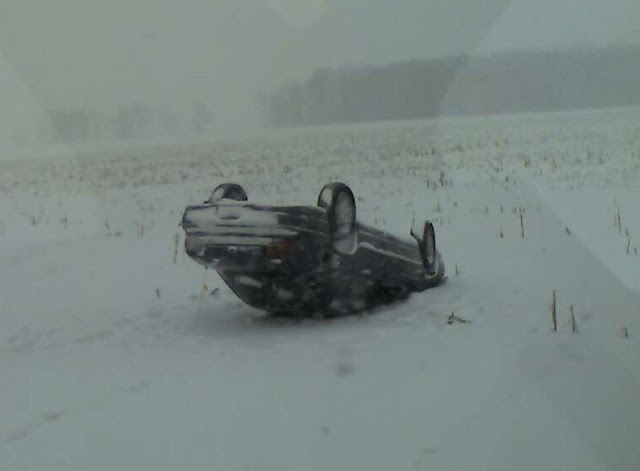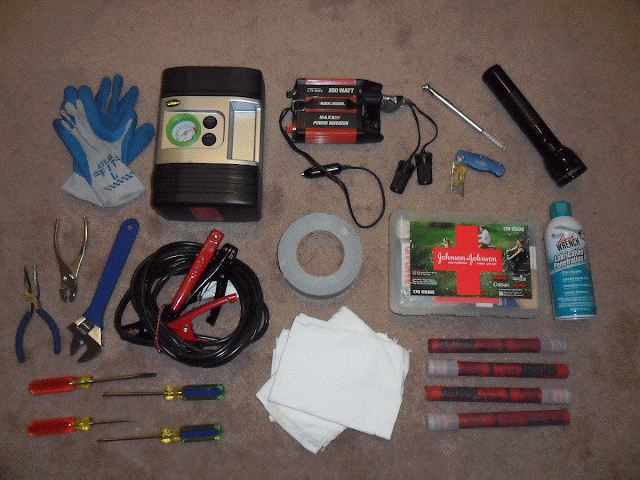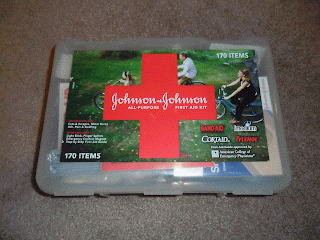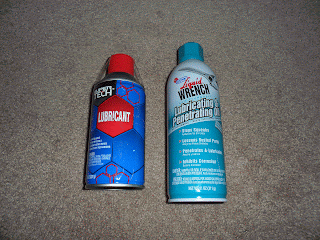An ever-increasing trend that you may have noticed while driving is headlamp flashing, particularly as a warning of a possible police speed trap up ahead. Often times in my own vehicle or when I'm in my work truck, I've passed by many motorists who had the courtesy to warn me of an upcoming speed trap by flashing their lights at me. I'll be honest, the first few times this happened to me, I was confused and didn't exactly know why the oncoming traffic was flashing their lights at me. However, by the second or third occurrence of this, I quickly figured out why they were flashing their lights at me. Seeing the police speed trap in the other lane of traffic after having just been "flashed" clued me in on what was going on. It wasn't long afterward that I began giving a "thank you" flash back to the other drivers. Now, as I mentioned before, I hardly ever speed anymore, and when I do, it's almost always by mistake, without me realizing that I'm speeding. However, I still appreciate the gesture from others drivers and I always thank them. It's still good to know where there's a speed trap around so it doesn't take me by surprise. Due to my past experiences with the law when I did used to speed, I still tense up when I see police on the road, especially when they're running radar, setting up speed traps, or doing other traffic-type patrolling. When another motorist warns me of a speed trap, this takes the surprise out of it and gives me a chance to double-check my current speed and slow down, if necessary.
So, keep in mind next time you're driving along and another motorist in the other lane seems to randomly flash his or her lights at you, it's likely that they're warning you of a speed trap. Of course, you may want to make sure you're not doing anything else wrong or have your high beams on, left a turn signal on, or something of that nature. In any occasion, be sure and return the favor by thanking the motorist of the warning. I hope this little tip helps you on your daily travels on the road.
Driver's Digital District
Monday, September 22, 2014
Saturday, November 30, 2013
How to Make Your Own Roadside Emergency Kit
Okay... So, a roadside emergency kit won't fix every incident you may encounter as you drive, such as the accident this poor fellow had in the picture up top. However, having some equipment in your vehicle such as tools, jumper cables, a first aid kit, and a flashlight might come in very handy for a more minor problem you may encounter upon your road-bound travels. In the year 2001, I got my driver's license and also got my first vehicle, a '92 Mercury Topaz. Since it was an older vehicle, my little car was prone to having issues during my trips on the road. Most of these were minor problems, but when they did occur, I lacked the tools and equipment to solve the problems. The first incident I remember happening to me is a common one that I'm sure almost all drivers have encountered or will encounter at some point or another, a dead battery. I didn't have my own jumper cables in my car to get my engine started again, but fortunately someone in the parking lot I was stranded in had some in his truck, so he kindly gave me a jump, and I was once again on my way. I'm the type of person that's usually prepared for just about anything, and sometimes even overly prepared. Needless to say, this incident encouraged me to make my own roadside emergency kit to put in my car to prevent me from being so helpless again. Had another problem arose on the road that I could've fixed myself, I had the proper equipment to do so.








An obvious part of your roadside emergency kit should be some basic tools. For mine, I have two pliers; needle-nose and flat-nose, four screwdrivers; a pair of Phillips large and small tipped, and a pair of flat-tip large and small tipped, and an adjustable wrench. Tools such as these can come in extremely handy for tightening up cables on a battery, replacing a tail light bulb, or installing an extra 12-volt outlet, for example. Almost all automotive basic maintenance needs and minor fixes can be corrected with a few basic tools like these. With the ability to recognize what the problem is and just a little bit of know-how, you'll be back on the road in no time! What kind of tools do you have in your vehicle?


















































































More items that can be handy that you can put inside your own roadside emergency kit such as a can of Fix-a-Flat, a fire extinguisher, some rope, cable ties, and even a 12-volt spotlight can be very handy during an emergency, regular maintenance, or other uses. While these products are a must-have, they can definitely be helpful at the right times.










What should you keep in your roadside emergency kit?
Essential Equipment
* FIRST AID KIT
* JUMPER CABLES
* FLASHLIGHT
* BASIC TOOLS - TO AT LEAST INCLUDE A COUPLE OF SCREWDRIVERS, BOTH PHILLIPS AND FLAT-TIP, PLIERS, AND AN ADJUSTABLE WRENCH
Tire Repair & Maintenance
* 12-VOLT TIRE INFLATOR
* TIRE PRESSURE GAUGE
Helpful Tools & Components
* BOX CUTTER OR POCKET KNIFE
* DUCT TAPE
* RUBBER GRIP GLOVES
* WIPING RAGS
Useful Accessories
* POWER INVERTER
* ROAD FLARES
* PENETRATING OIL / LUBRICANT
Handy Extras
*FIX-A-FLAT
*FIRE EXTINGUISHER
*ROPE
*CABLE TIES
*12-VOLT SPOTLIGHT
*CHEMLIGHTS
Essential Equipment
First Aid Kits
Just in case an unfortunate injury occurs, whether related to driving or not, it's always a good idea to have a first aid kit in your vehicle and is the top priority item in my roadside emergency kit. In the unlucky misfortune that you or one of your passengers has a minor injury on the trip, chances are you'll be able to correct the situation with the use of a first aid kit. Also, the first aid kit can be a necessary item for when you are at your destination as well. Chances are you won't be too far away from your vehicle so the first aid kit should be relatively handy waiting in your vehicle if need be.
Jumper Cables
A solution to one of the most common roadside problems, jumper cables are another necessity to have in your roadside emergency kit. One of the most common issues encountered by drivers is a dead battery. Fortunately, this is also one of the most easily correctable and fastest to fix problems along the road a driver can have, provided you have the right equipment. This is an item all drivers should have in their vehicle. Whether it's for use in your own car or to help out another stranded motorist along the road, it's a great idea to keep this in your trunk. Jumper cables come in different lengths and in different gauges of wire, depending on the type of job you need it for. Look below to find the jumper cables that suit your needs best.Flashlights
Flashlights are handy just about everywhere - an attic, a workshop, a crawl space, while cave delving, and yes, even in your own personal vehicle. In particular, there are at least a few purposes for the use of a flashlight in your vehicle. An obvious example is your car breaking down at night. Perhaps to shine a light into your engine to see if you can figure out a possible mechanical problem or to illuminate a wheel while replacing a tire. However, if the problem is above your skill level or too complex for your available equipment, you can even use the flashlight as a signal to wave at other drivers or emergency vehicles for help at night. This is another must-have for any roadside kit. Don't get stranded at night without one!
| This is the flashlight I prefer, the durable and high-quality Maglite. I've used Maglites for years now because of their durable build, water-resistant casing, and the adjustable beam of light. |
 Basic Tools
Basic Tools
An obvious part of your roadside emergency kit should be some basic tools. For mine, I have two pliers; needle-nose and flat-nose, four screwdrivers; a pair of Phillips large and small tipped, and a pair of flat-tip large and small tipped, and an adjustable wrench. Tools such as these can come in extremely handy for tightening up cables on a battery, replacing a tail light bulb, or installing an extra 12-volt outlet, for example. Almost all automotive basic maintenance needs and minor fixes can be corrected with a few basic tools like these. With the ability to recognize what the problem is and just a little bit of know-how, you'll be back on the road in no time! What kind of tools do you have in your vehicle?Tire Repair & Maintenance
12-volt Tire Inflators
This is something that's been a huge help for me, especially since I moved out of my house where I had my own garage to park in. I used to have an air compressor in my garage, but since I moved out because I joined the Army, I don't have such facilities anymore, so my portable 12-volt tire inflator is the perfect replacement for my old air compressor. Granted, it's not as powerful and doesn't pump air as fast as an actual air compressor, but it does the job. Especially in a pinch, a tire pump such as this comes in extremely handy, which is why I always have it in my car in my emergency roadside kit. The first two models below are very similar to the one I own and use, just more up-to-date versions. Mine works great and I have no complaints about it, so I'd recommend having one of these in your vehicle all the time as well.
Tire Pressure Gauges
Many of the 12-volt tire inflators feature a built-in pressure gauge on them, but it's always a good idea to have an independent one in your car to check tire pressure with ease and without the use of the pump attached. You should check the pressure in your tires about once a month on average to make sure the pressure is at the right level and to insure you don't have a leak. However, this varies by how old your tires are and the condition that they are in. By keeping your tires at the right level, the tires wear properly and evenly, while also optimizing gas mileage.Helpful Tools & Components
Box Cutters & Pocket Knives
These are a great idea to have in your roadside kit for several reasons. Whether you're cutting or stripping wires for some electrical maintenance, cutting open a new product out of its packaging (something I frequently use mine for), or any other general maintenance, repairing, cutting, or removal need, a pocket knife or box cutter is a very handy tool to have at the ready in your kit. Even if you don't keep the knife in your kit, it's a good idea to keep one in your glove box because of the frequent use and handiness of a pocket knife or box cutter.
| A more premium and stylish version of the utility knife to the left. |
| Extra razor blades for the utility knives to the left. |




 Duct Tape
Duct Tape
Depending on the duty of the job you're trying to get done and what the application is, duct tape can be a great item to have in your kit. Especially if you have a lemon, a junker, or any other vehicle that you're really not too concerned about, taking the "Red Green approach" as he states duct tape as being the "handyman's secret weapon" to fixing the problem may be one of the most quickest and easiest ways. There are different types and duties of duct tape, so make sure you pick the right one.
Rubber Grip Gloves
I first started using these kind of gloves when I worked at FedEx. Not only did they keep my hands slightly warmer in the winter months, but they also helped me grip packages much better than normal. They came in very handy for awkward or extra-heavy packages. These gloves are excellent for maintenance work. They'll keep your hands cleaner, warmer in the winter, give you increased grip, and help protect them from minor injuries. And because of the relatively thin yet durable material they're made out of, you won't be sacrificing much of the dexterity of movement with your fingers and hands. I highly recommend these gloves to be kept inside your vehicle for the many uses they're good for. They're absolutely perfect for your glove box! ;)
Wiping Rags
These are an obvious maintenance accessory and a very useful item. Whether you keep them inside your roadside kit or side pocket of your door for quick use, these can be lifesavers for wiping up spills from a beverage, wiping up engine fluids, or wiping your hands off after some maintenance work. I keep some wiping rags both inside my car in my door pocket for quick use for a beverage spill or similar accident, along with some more heavy-duty ones in my emergency kit. Look for the wiping rags that are most suitable for your needs below.
Useful Accessories
Power Inverters
A very useful 12-volt accessory, this can either be a luxury-type of item or used more for the emergency. Having a power inverter in your car basically turns your vehicle into a portable generator, allowing you to power and use many of the standard (or all kinds, depending on the duty of your power inverter) 120-volt household or automotive electrical items or accessories. This can be useful for powering a laptop or portable DVD player for personal use, or powering an emergency-type item such as a radio or even a regular air compressor.
Road Flares
These red emergency road flares are ideal for changing a tire or any other type of breakdown during the night. However, they're also bright enough to be used during the day for added safety. These come in the traditional burning-type flares or the new LED light style of road flare. Find the best one below to suit your needs best.
Penetrating Oil & Lubricant
Keep your moving automotive parts moving and unfreeze your stuck parts with penetrating oil or another type of lubricant, such as WD-40 or Liquid Wrench, are another ideal item to keep in your kit. Perfect for maintenance and keeping moving parts such as bolts, tools, and even door latches moving like new. Penetrating oil is also great for removing corrosion on certain engine parts and making them usable once again, if they have seized up or become stuck.
Handy Extras
Handy Extras
More items that can be handy that you can put inside your own roadside emergency kit such as a can of Fix-a-Flat, a fire extinguisher, some rope, cable ties, and even a 12-volt spotlight can be very handy during an emergency, regular maintenance, or other uses. While these products are a must-have, they can definitely be helpful at the right times.
| An obvious good idea emergency item to have in your vehicle. Whether you keep this in your kit or in a different, more accessible place in your vehicle, this can be both a car and/or lifesaver! |
| In case a regular flashlight from your glove box or roadside kit isn't good or powerful enough, there's always the very bright and powerful alternative, the 12-volt spotlight. Comes in different lengths and in camouflage or black colors. |
| In case a regular flashlight from your glove box or roadside kit isn't good or powerful enough, there's always the very bright and powerful alternative, the 12-volt spotlight. |
After you've got all your items and products that you've chosen for your own roadside emergency kit, you'll need a box or container to put them in so the items just aren't rolling around loose in your vehicle. I've found that a small to medium-sized storage tote works best to store and organize the contents for such a kit.
Subscribe to:
Comments (Atom)

















